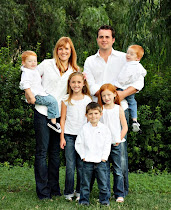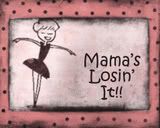Ever had a museum touch you? I mean really touch you? So much so that you remember the exibits and feeling years later? The Museum of Tolerance in Los Angeles, Mauthausen concentration camp in Austria and the Anne Frank house in Amsterdam really moved me. Not because I'm obsessed with The Holocaust (or maybe I am?...when given all the time in the world during my hospitalization to read any genre of literature available I chose two books by Holocaust survivors) but because it represents to me what can happen any time, any where to any one. I found an old college assignment (remember dashing off papers in as little time possible and hoping they'd fly with the professor?) that brought forth all those memories and illustrates what these places evoked in me.
The Museum of Tolerance is a site that is intellectually stimulating, emotionally wrenching, and personally demanding. It is significant because it challenges one's personal, cultural, and intellectual ways of viewing the world. The museum entreats all of us to reflect on our lives and the things we believe in, in order to make any changes that are necessary. It asks us to realize the power of our words, to take responsibility for our actions, and to understand individual choice.
The museum is an incredible facility that promotes the learning and application of tolerance. It vividly reenacts events that happened in Nazi Germany in what is now called the Holocaust. It has an outreach program devoted to the research and education of students and teachers. It contains artifacts from Nazi Germany concentration camps that remind us that what we see and experience in the Museum of Tolerance is real. And lastly, it is important to know that the museum is specifically set apart in remembrance of all of the Jews who were exterminated. This is done with the goal that something like this will never happen again.
There is nothing in the museum that can be taken lightly. The purpose of the museum is not to depress the masses of people that visit every year, but to educate them about hate and scapegoating, and the possible results. It shows us real examples of this to explain how such a tragedy was allowed to happen. It illustrates how a nation as a whole in their passivity allowed such atrocities to take place.
Unfortunately, history does repeat itself. There have been many instances in the world in which masses of people were exterminated because they did not fit the mold of what that particular society deemed ideal. It is easy to forget that things like this happen, because we do not want to believe that humankind could possibly do the things they have done. That is why the museum is so incredibly important. It educates us, and it reminds us of the atrocities that happened both in Germany, and historically throughout the world. The goal is that we learn to be less biased, more tolerant, more knowledgeable, so that we never allow something like this to repeat itself anywhere, but particularly in the United States. We need to be reminded that the United States has had its own Holocaust. This happened when we colonized the states, and virtually wiped out the Native American population. Anyone can be a target for discrimination if they do not fit the accepted mold. We need to make sure we broaden our perspective and totally get rid of a general accepted mold. Everyone is different, so no matter what the mold is, someone will not fit.
When I was in Europe a few years ago, I visited a concentration camp in Austria called Mauthausen. Instead of entering the camp in the traditional manor by being dropped off right in front, I entered the camp walking in the same way thousands of Jewish people did everyday. I walked up a few hundred precipitous, slate steps built into the side of a quarry. In the camps emaciated bodies were required to collectively carry huge slabs of rock to the top. If one person fell under the weight of the load, they all toppled like dominoes. In silence I traveled these steps, and when I reached the top, I could hardly catch my breath, or contain my tears. Silence permeated the concentration camp as tourists visited the site of fear, misery, and unjustified death. This is the same atmosphere that can be felt when visiting the Museum of Tolerance.
The museum makes one question their own convictions. It raises questions like, "What would I have done if I were a Jew in Nazi Germany?", "Would I have stood up for what I believed in in light of the circumstances?", "Would I have sheltered Jews? Or would I have flushed them out?" It makes one sick to their stomach, knowing what happened to people just like themselves, in a Western culture just like their own.
The museum has the same psychological impact as a real concentration camp. As one descends to the lower floor of the museum, it gets darker and colder. As one goes through the Holocaust presentation, they realize they are locked in rooms for twelve minute increments. Some people are separated from their families , divided by gender and physical health. They are sent down different hallways, not knowing when they will meet back up again. An explanation of how things got out of hand (which was discussed above) is conveyed during the tour. It makes the whole experience take on personal meaning. It makes one see how we can so easily be misled by authority figures. And finally, we are each given a card with a child's picture. We view the Holocaust through their eyes, which makes it even more horrible. In the end we find out the fate of the child whose card we hold. By the time we find out whether the child survived or was killed, it almost does not matter, because knowing what they went through weighs so heavily on the mind. The whole tour makes one feel to a very small degree the emotions the Jewish people must have felt in the camps.
The museum educates vicariously as well. One does not need to go to the museum to learn about tolerance and the Holocaust. One can simply access the information on the Internet. They have a wonderful web site at motlc.weisentahl.com that contains the information contained at the museum, particularly in the learning center. Wouldn't it be wonderful if the mass media were to get involved in an educational venture like this? The message could be spread across the globe.
The Museum of Tolerance definitely achieves its goal of educating the public about the Holocaust and teaching people about tolerance. There are very few sites that convey a strong personal, social and religious message that is both not likely to be forgotten, and worth conveying. The Museum of Tolerance stands out as a great example of what can be taught within specific parameters. The Museum of Tolerance provides information that challenges us to think about our personal, cultural, and intellectual ways of viewing the world.












































9 comments:
Thanks for that, it really makes you put your own trials and tribulations into perspective. Something I haven't been doing lately. Have you read the Hiding Place by Corrie Ten Boom? If not, it's a must!
I visited Dachau in Germany and it changed me as a person. The horrors that human beings inflict upon one another is beyond belief. I also visited Ancient Corinth in Greece and that was also incredible.
Angie,
I have always wanted to visit the Museum of Tolerance and hope that one day I will get the chance. It really is so horrifying to imagine that people had to live through that time and the pain and suffering that so many had to endure. You always do such a nice job of writing posts that leave a mark and make us busy bloggers think....
You are so right...I visited the Holocaust Museum in DC and it changed me for the same reasons that you spoke of. It was a commentary on cruetly, hatred and ignorance, as well as the human spirit, the will to live and a fight to go on.
There is also a museum in Galveston, TX that focuses on the 1900 hurricane that killed 8,000 people. That one "got to me" as well.
You guys are so great to actually read this post and take the time to comment. I knew that it would probably be skipped over by most both for content and LENGTH, so I'm pleasantly surprised to find your notes. The Hiding Place is one of the books on the Holocaust I read while I was in the hospital and will probably always be one of my favorites if for no other reason than she found the goodness in everyone and the small miracles in life despite living through what she did. A resistance fighter with a soft heart and a firm faith in God. Amazing.
I too loved the Anne Frank house in Amsterdam. It was one of the saddest things to see the last room of the house and read that the girls had died in camps just weeks before the liberation. It makes you wonder how we as humans could be so cruel to those around us...The holocost museum in Washington DC is also a tear jerker. You walk through the trail cars that pulled people to these horrible camps. Then you walk through rooms of clothing, shoes, eye glasses, brushes, hair, suit cases. It's just really terrible but it gives you an idea of what it must have been like. These poor people had no idea what they were being sentenced to. I oft think that those who were killed right when they got off the train where the lucky ones. Those who had to endure the punishment of not knowing about loved ones where the ones who had it the worst.
I guess going to these kind of places just makes me want to travel even more. I know there is so much of the world that I haven't seen and would love to visit. Not everything is peaches and cream, but I think we need to see the bad to appreciate the riches and blessings that we so enjoy...
Angie I love to go anyplace that I can read on history. The halocaust has always held a special interest for me. Corrie Ten Boom is one of my favorites. I would love to go the Halocaust museum in D.C. Can you believe that some people actually deny that it ever occurred?
I love museums too. The Nat'l. Holocoust Museum is only about 20 mins. away and I still have never gotten a chance to visit since I moved to DC. I would love to check out the Museum of Tolerance. It's crazy that people are denying these historical injustices. I have to pick up that book, I need a good read. Really enjoyed the post!
Post a Comment